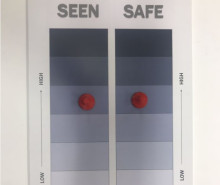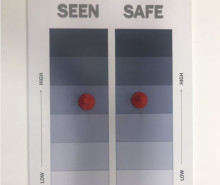Denise Leyton
Posts tagged with User Research
Showing 21 - 30 of 36 items

In three blog posts, the authors describe a multi-year library service design project. This second post describes the research process used to develop our user experience tool.

In three blog posts, the authors describe a multi-year library service design project. This first post describes the origins and goals of the assessment project.

How can we improve the familiarity and credibility between Library experts, resources and services we offer and the students, faculty and staff who use them? Whether we’re building new relationships or reconnecting with patrons/colleagues during assessment or user research activities, we have the opportunity to use certain marketing and communication best practices and tools during our user research to align clear and targeted communication with our key audiences.

When planning an assessment project in the Library, one important step is to consider whether your project should be vetted by the Institutional Review Board (IRB) at U-M, a committee that ensures studies with human subjects are ethical, that subjects are protected from unnecessary psychological or physical risks, and that subjects are participating in a fully informed, voluntary manner. This post details when your data collection may be subject to a full IRB application and review process.

The first post ("Personas: A Classic User Experience Design Technique") in this 2-part series described what personas are and, generally, how to create them. I closed with some cautions about ways personas might come out less than helpful – creating flat, overloaded, or fake (unresearched) personas. The second post presents our persona development for a specific website project.

Personas are employed in user experience design work to help design teams create or improve systems, spaces, and services with targeted populations in mind. Libraries use personas as archetypes to maximize effective library user experiences. This is the first of two posts about the creation and use of personas in the U-M Library.

When developing or reconsidering a library service, sometimes you can get stuck in your head. You go back and forth with your colleagues proposing different ways of doing things. You model out different scenarios, do an environmental scan, read the literature, weigh pros and cons but you still can’t decide how to proceed. A great way to figure out how to move forward is to go to your users for feedback by employing intercept interviews.

Continuing the discussion about survey design (see Let's Talk about Surveys, Part 1), you’ve decided a survey is an appropriate methodology for what you want to find out and are thinking about what questions you want to ask. But how you ask these questions and structure them within the survey itself, as well as the question formats and options you give people for responding all require careful consideration.

Doing a survey is often the default research method thought of when you need to answer questions about what people like, expect, or want, among other things. While surveys are likely to be considered the easiest option, you can’t conflate “easy to create” with “easy to create well.” Even if a survey is an appropriate methodology for the question you’re looking to answer, the questions you ask, the way you ask them, and the options you give people for responding all require a thoughtful approach.

Ask a Librarian email and instant messaging (IM) service providers targeted current users of our virtual reference services during 2016-2017, to gather feedback about our online research and reference service. We wanted to know more about users' motivation for seeking help via email and via IM, as well as users' satisfaction with their online interactions. Additionally, we were interested in gathering users' ideas for future IM service enhancements.